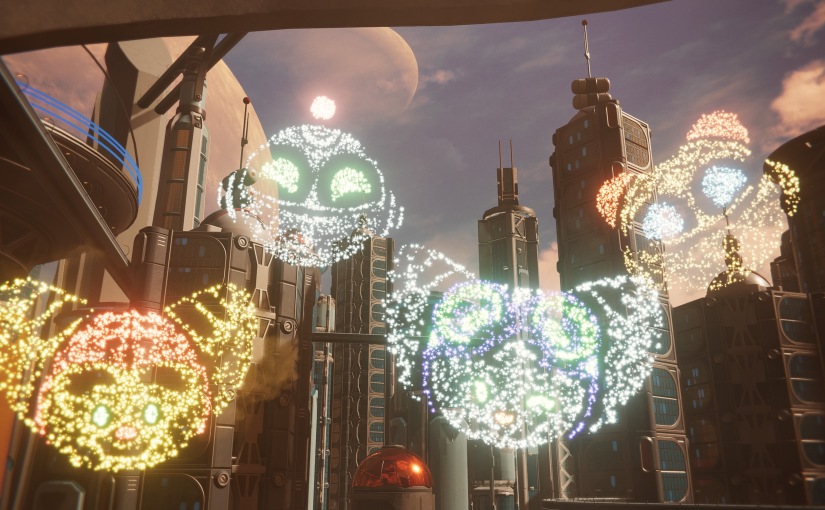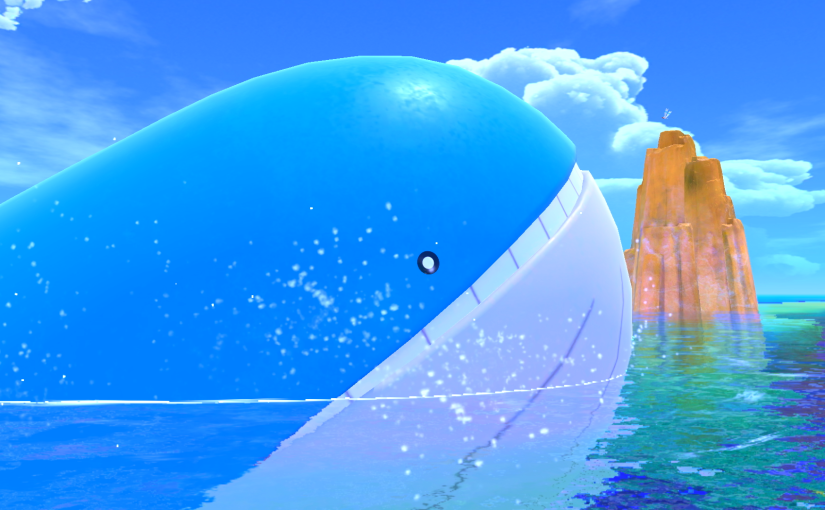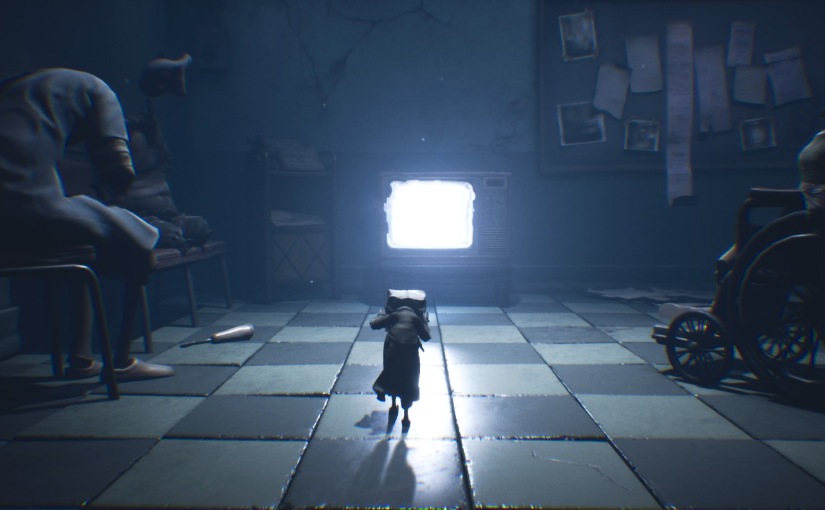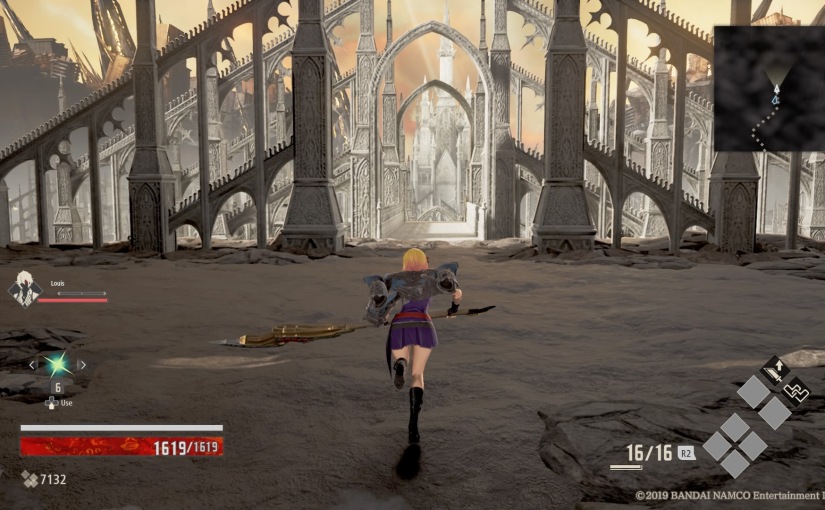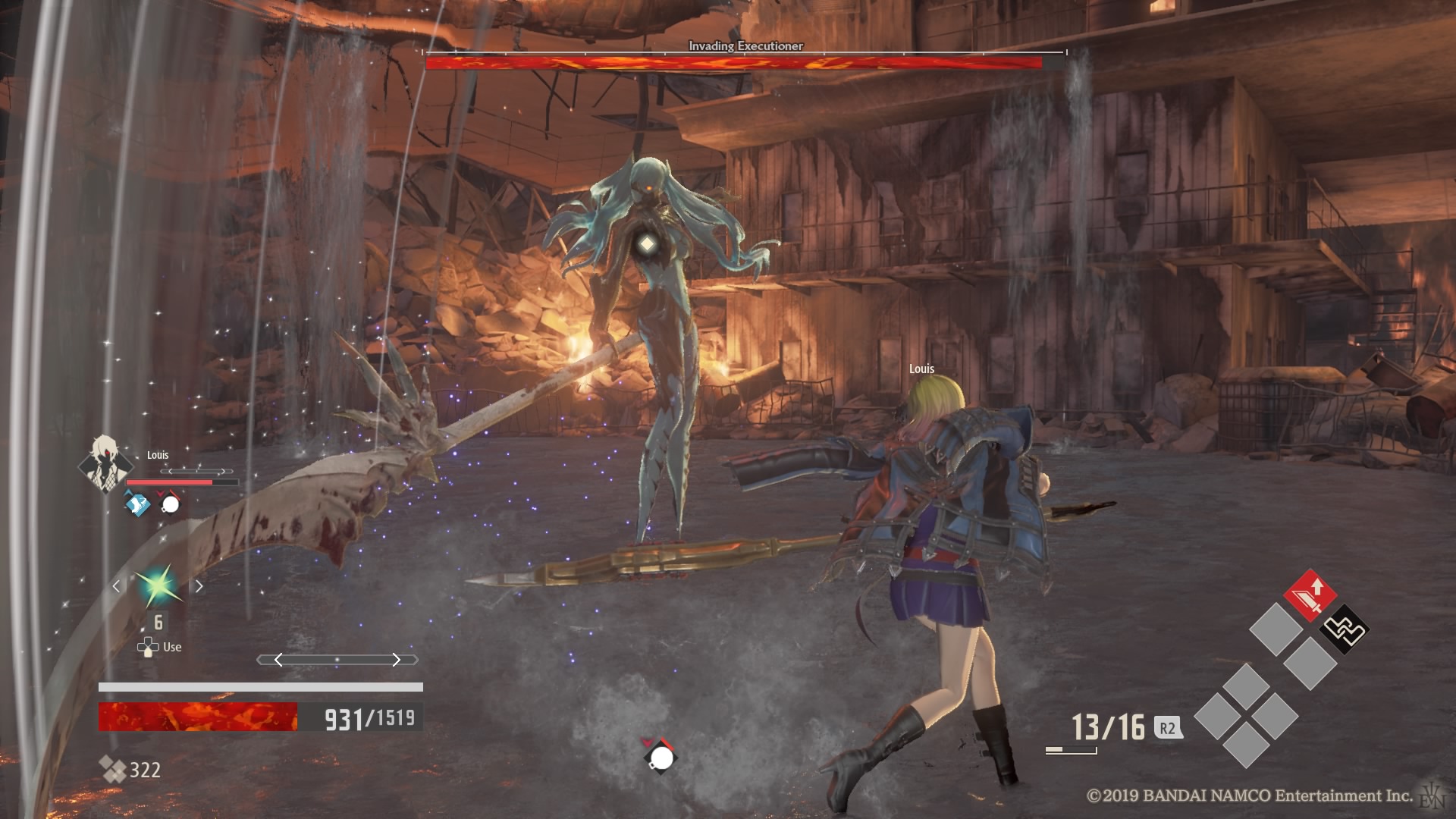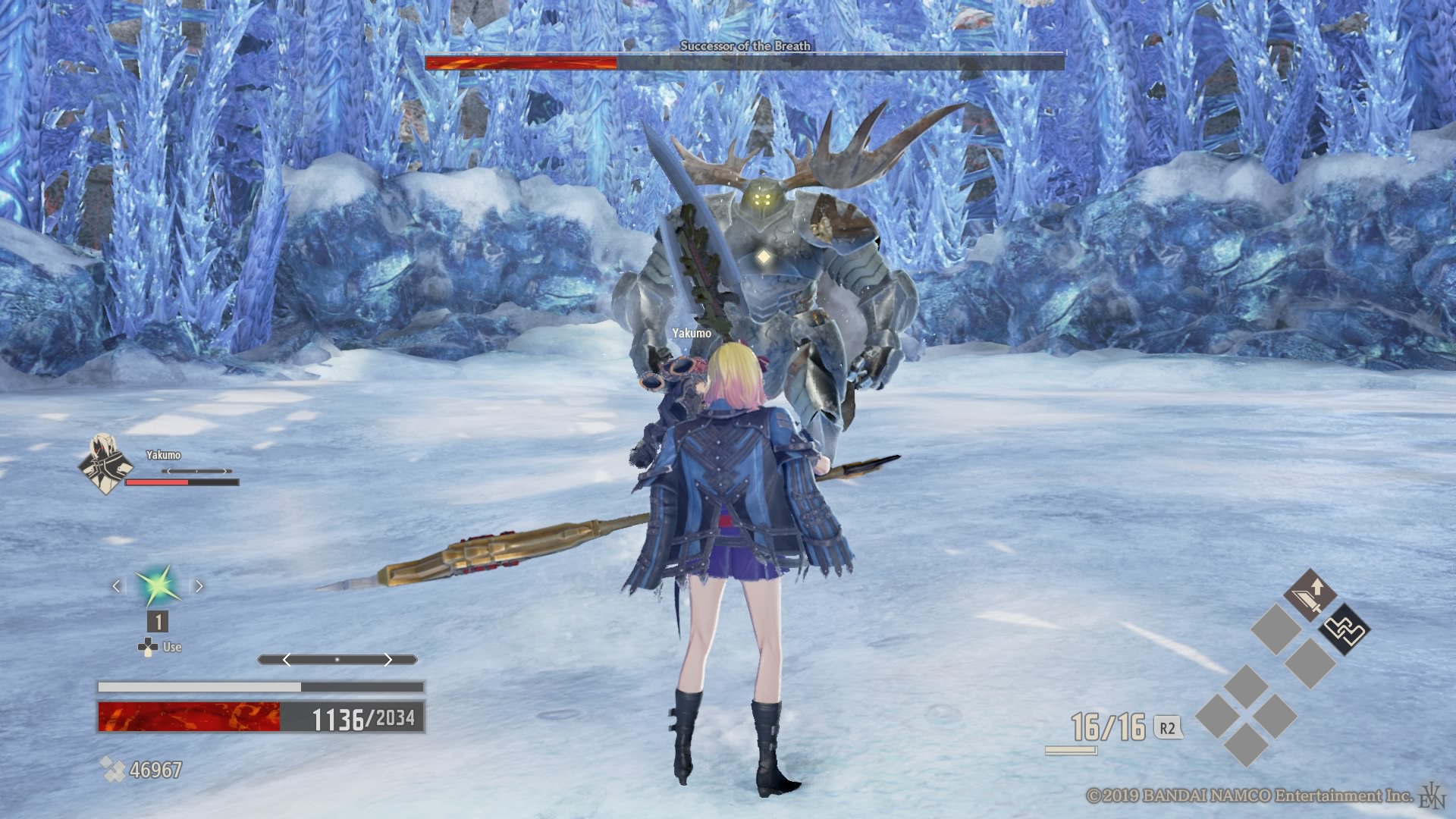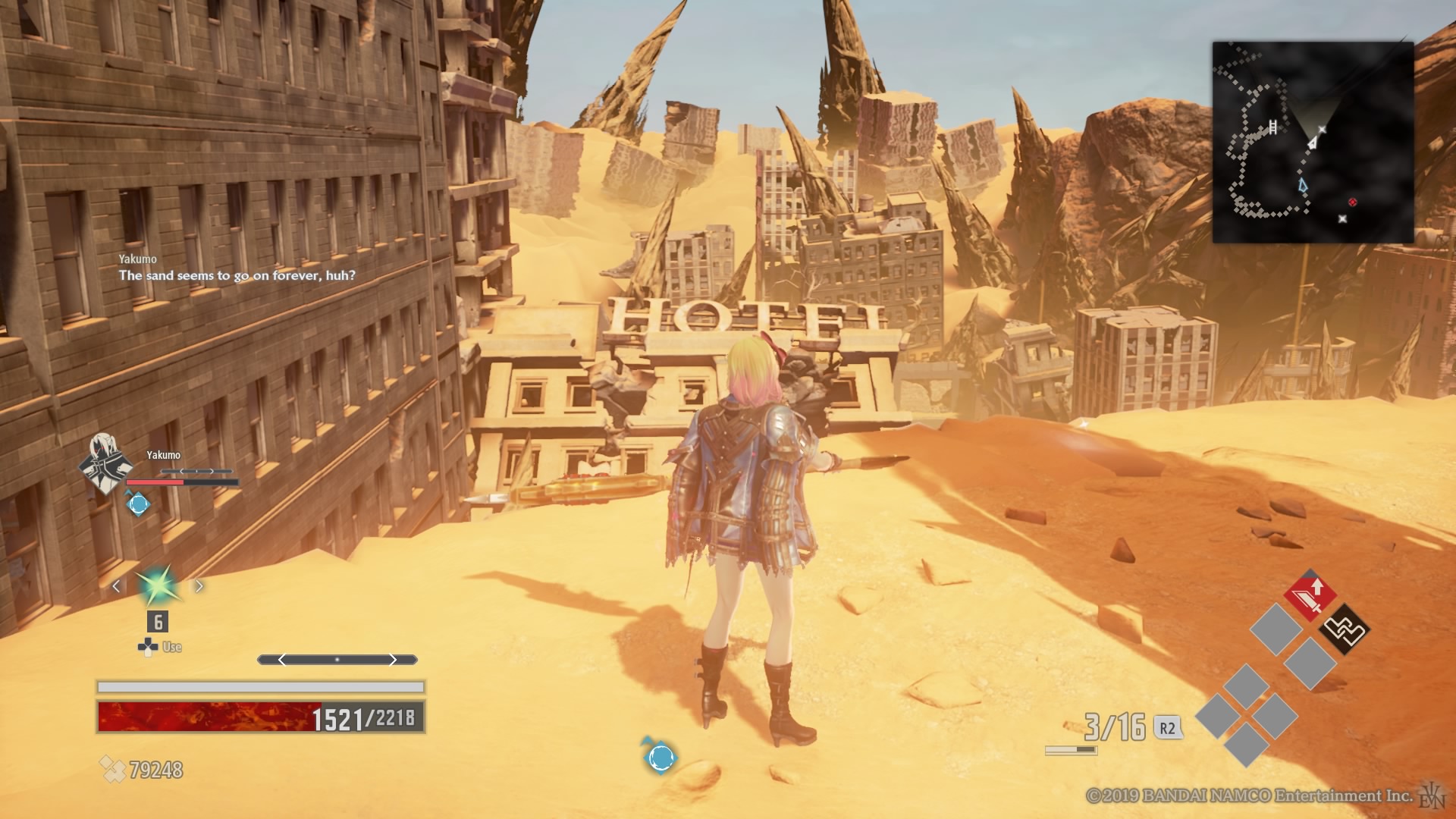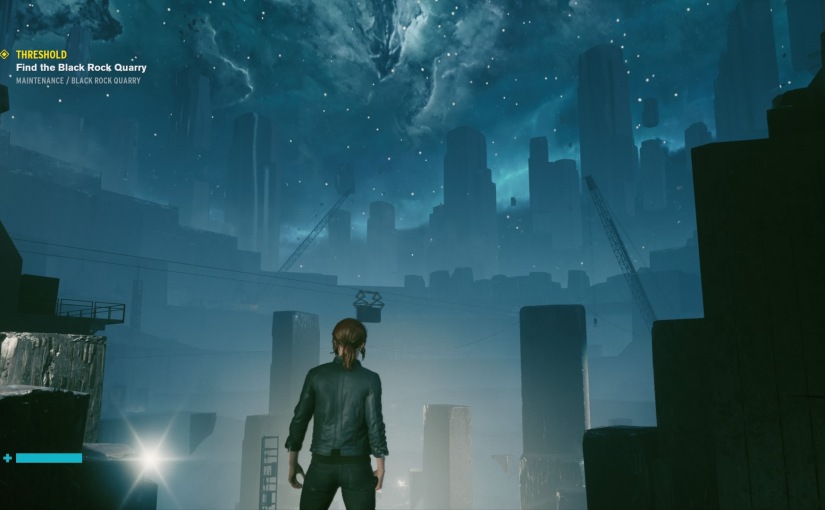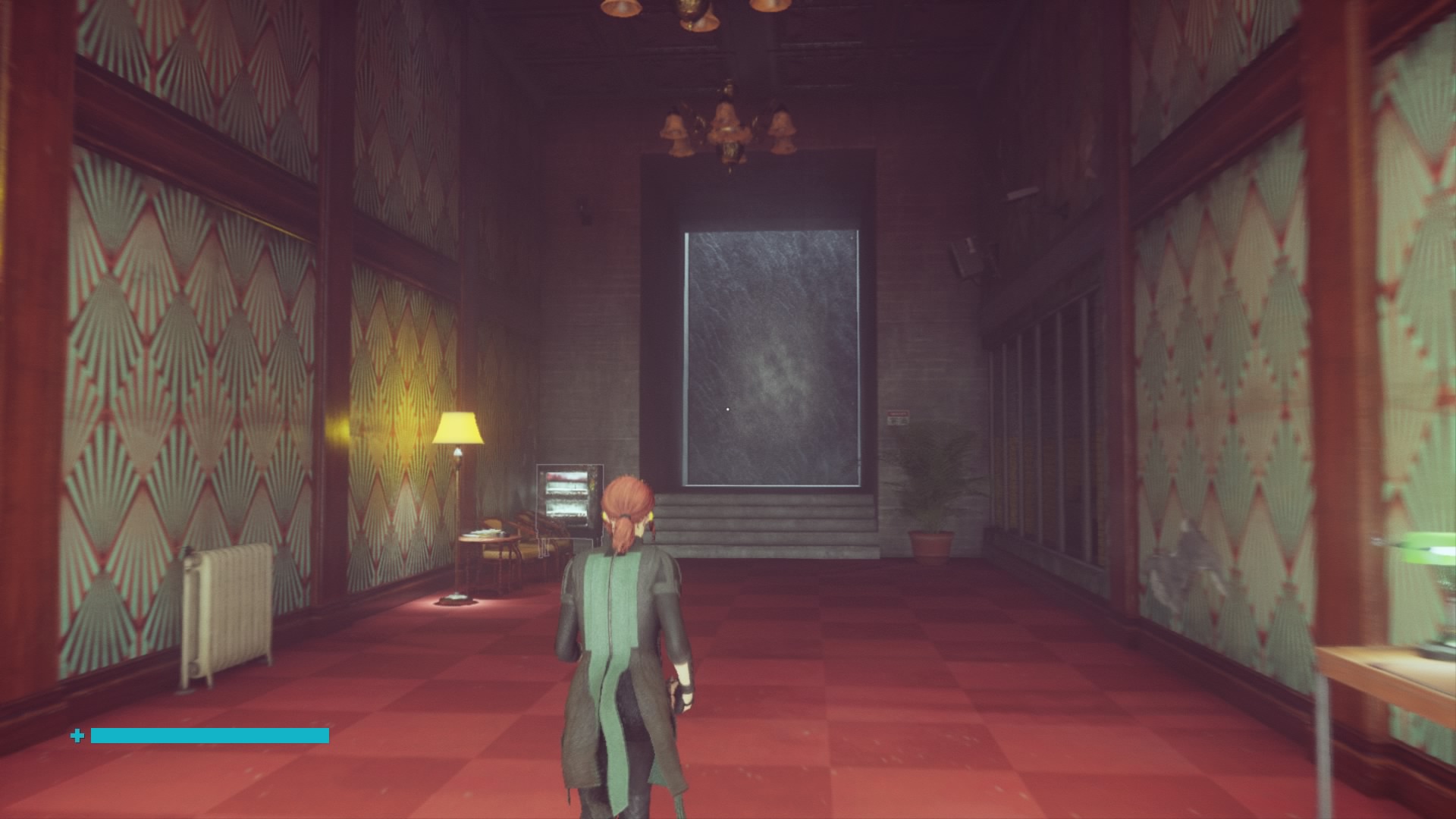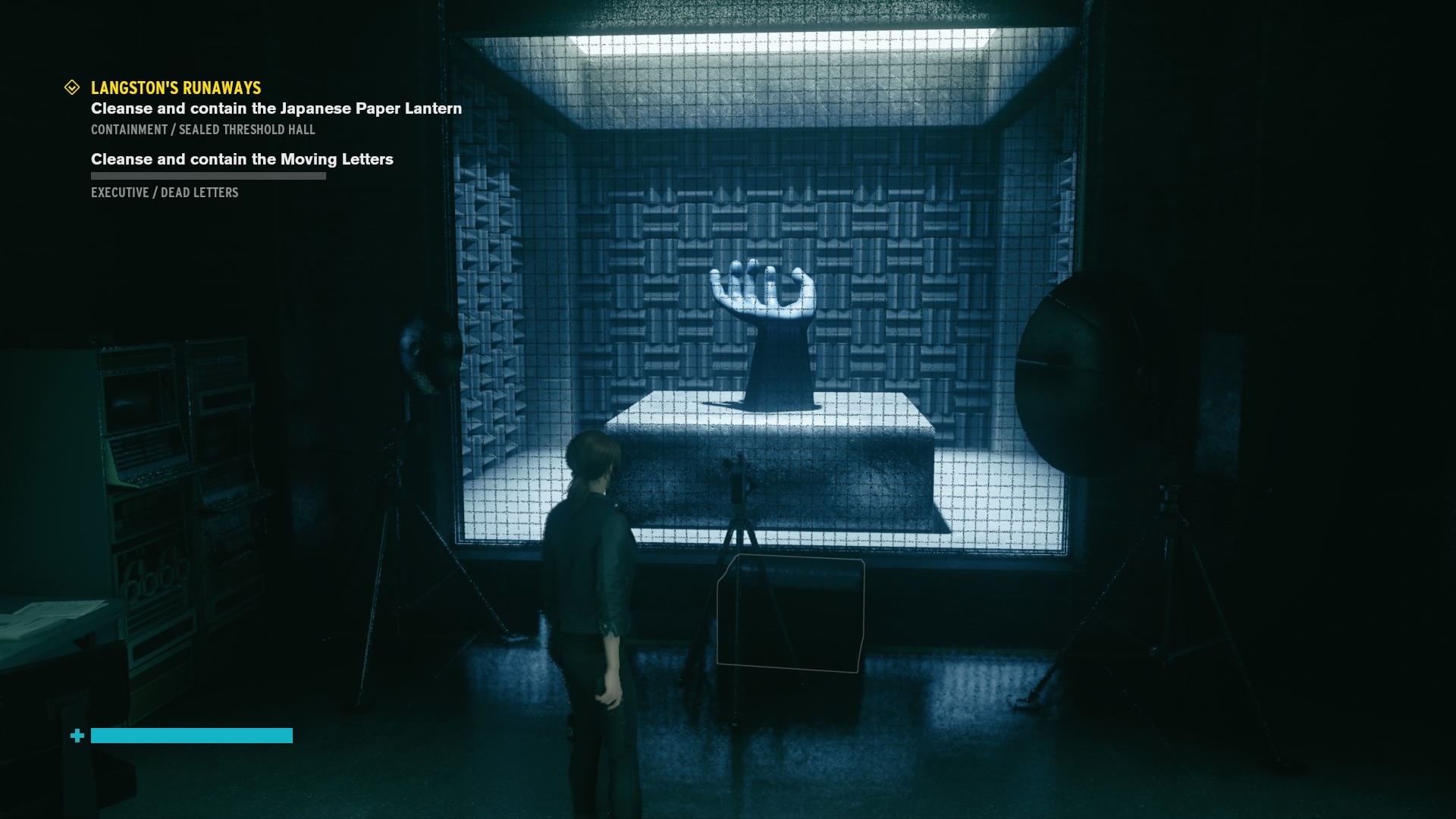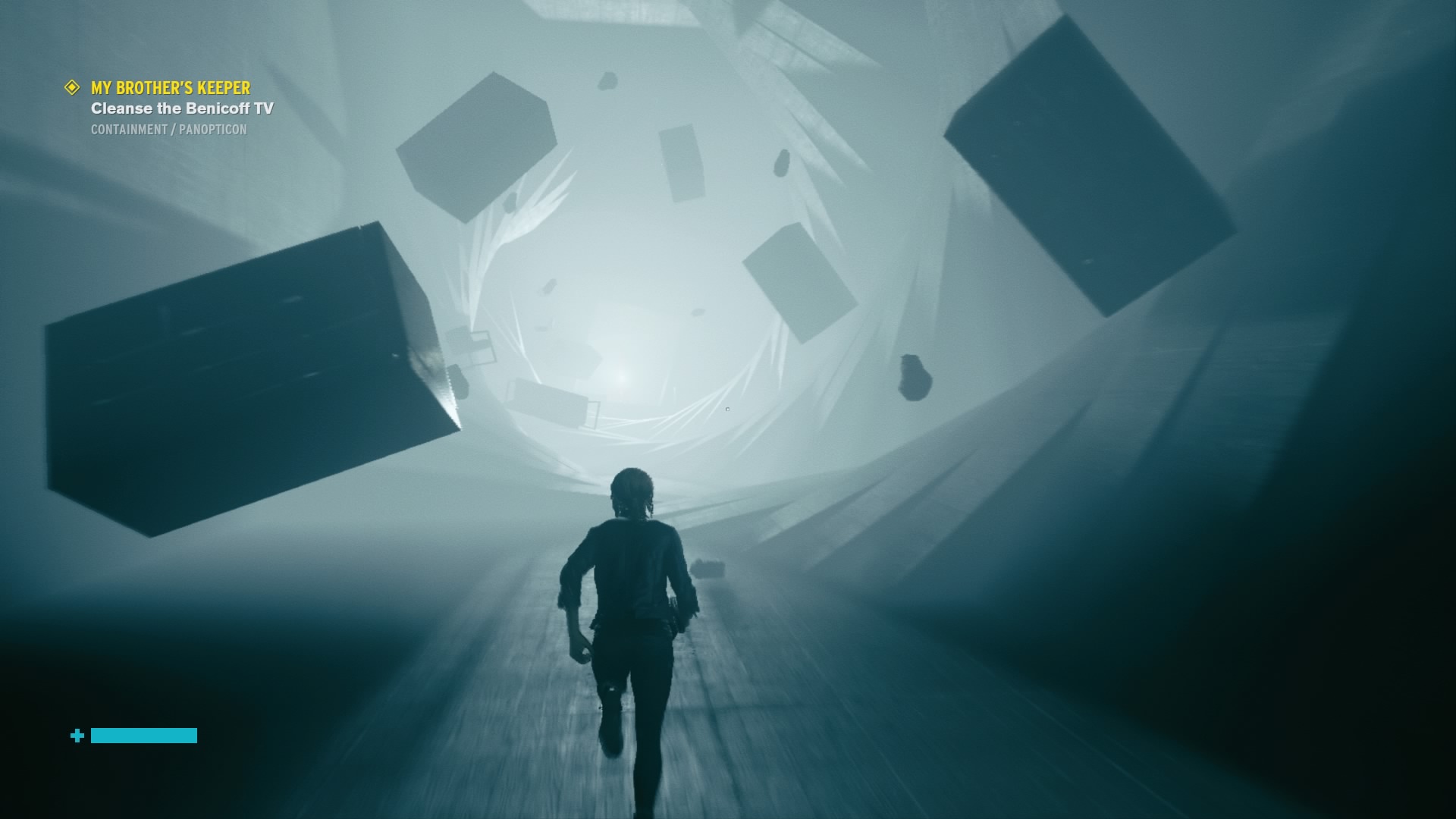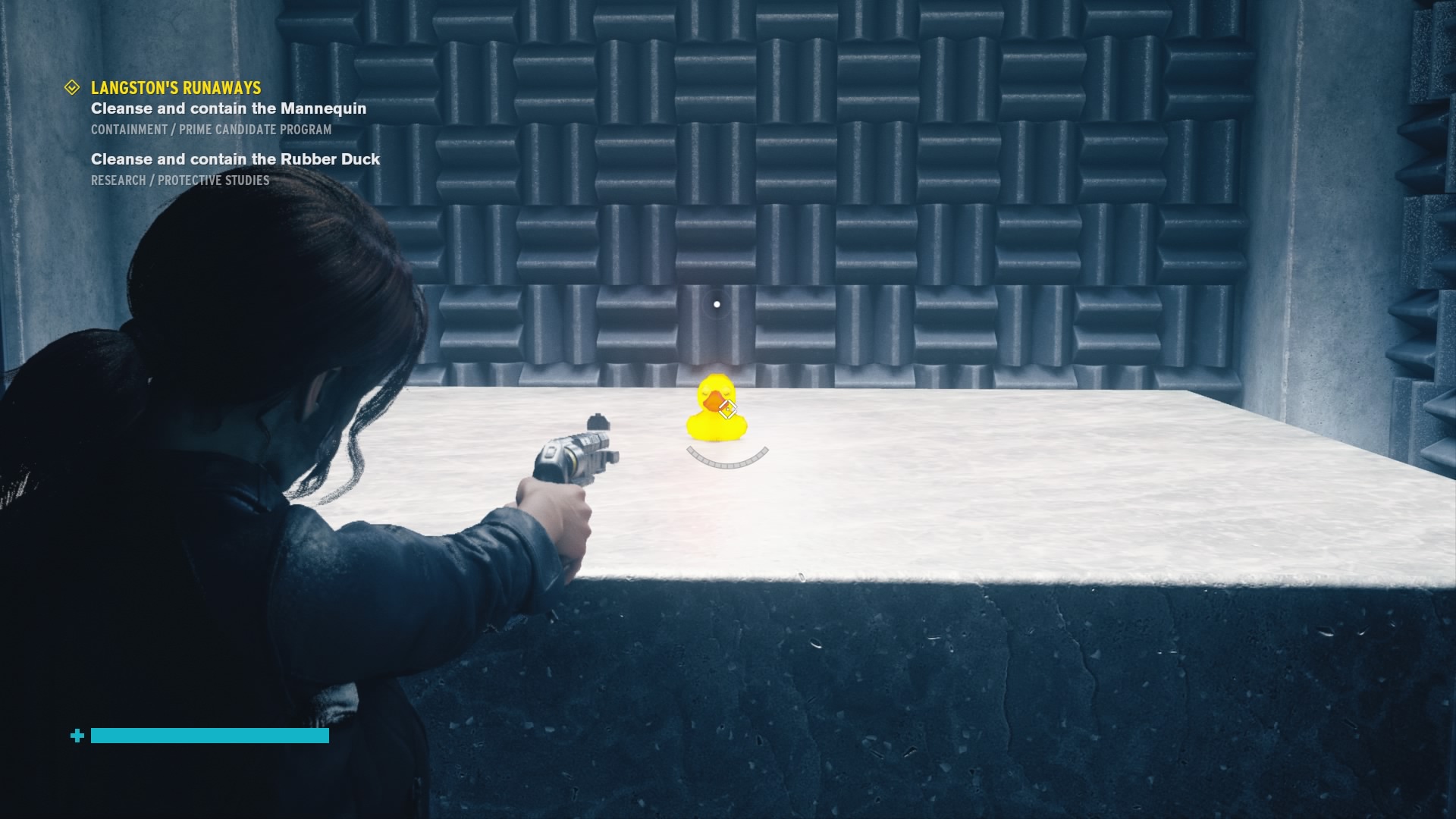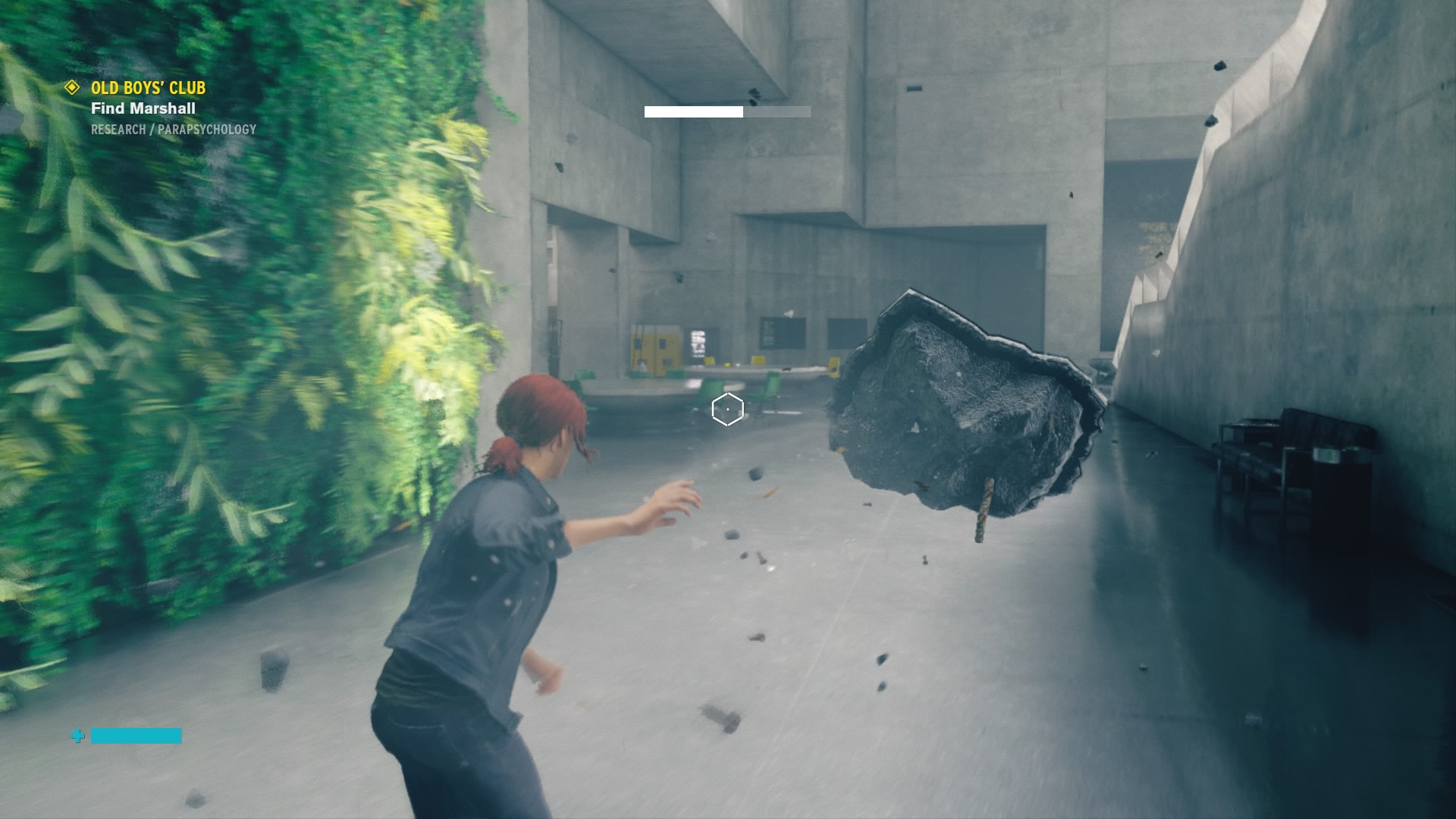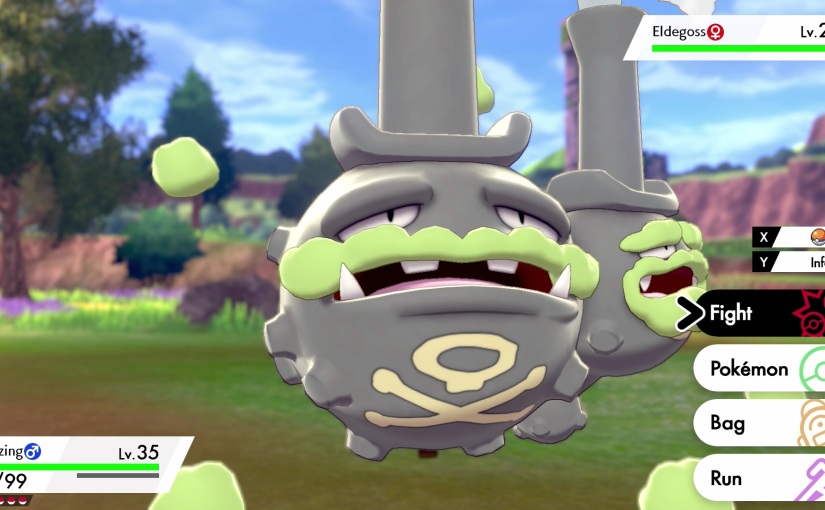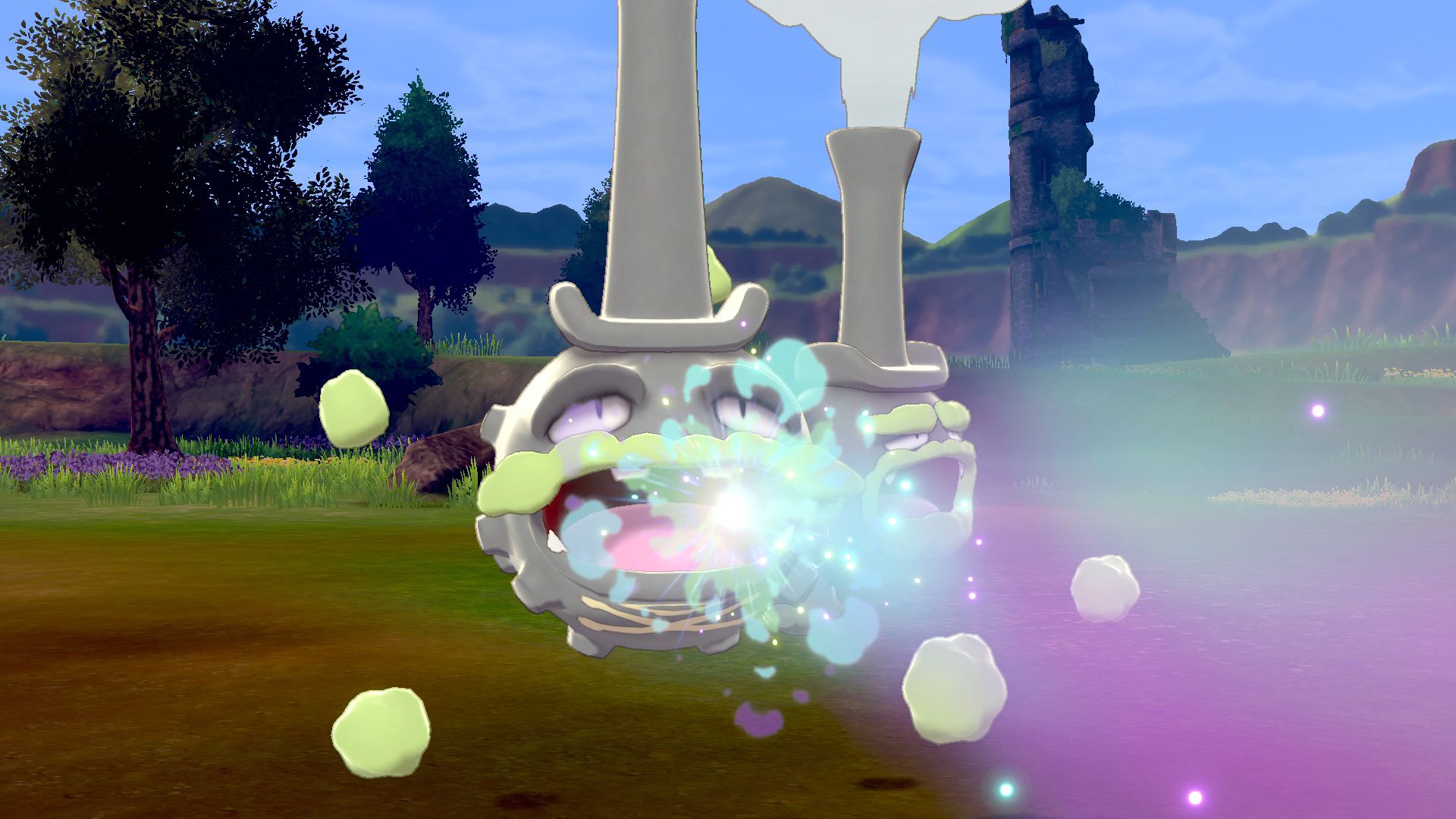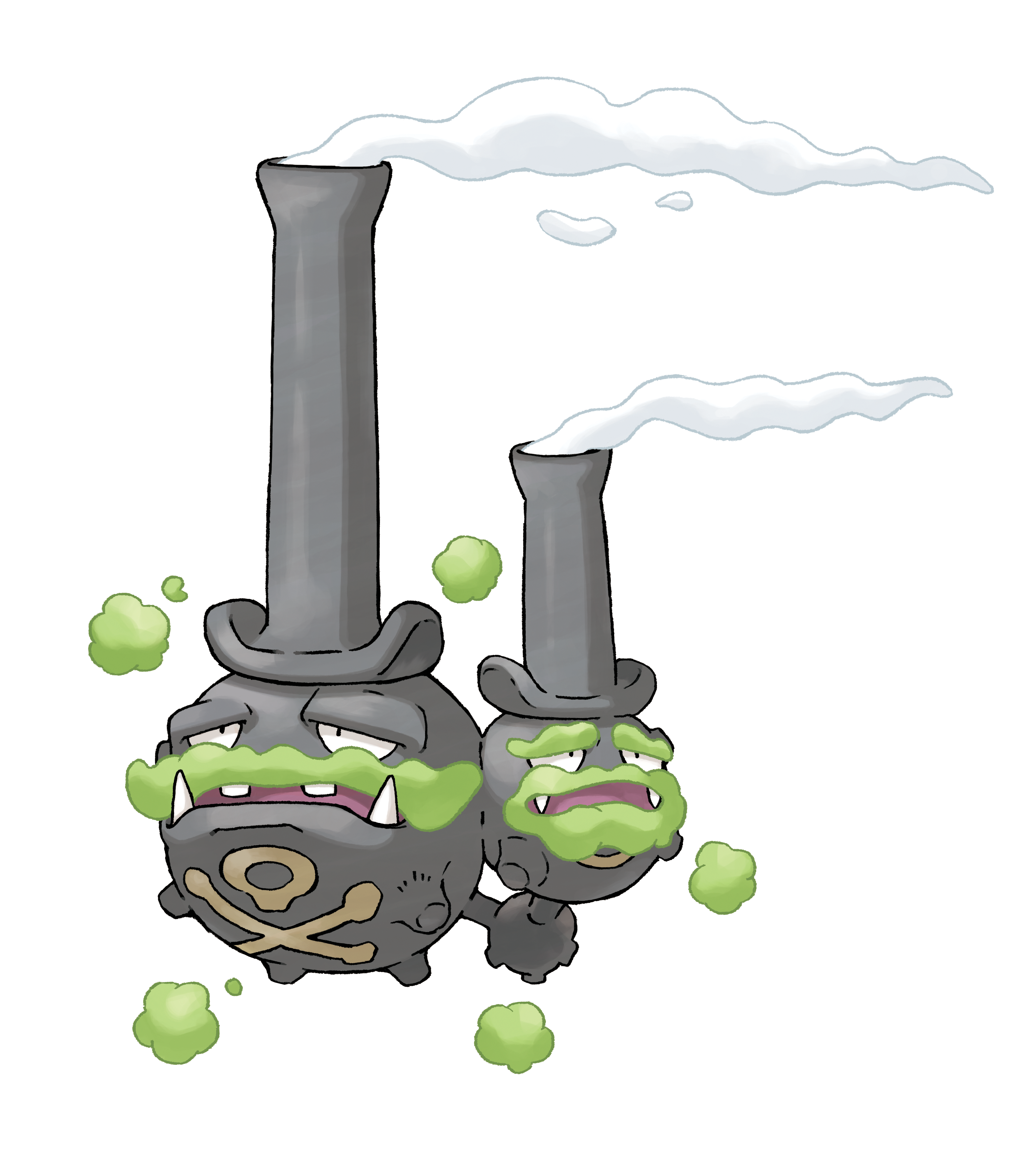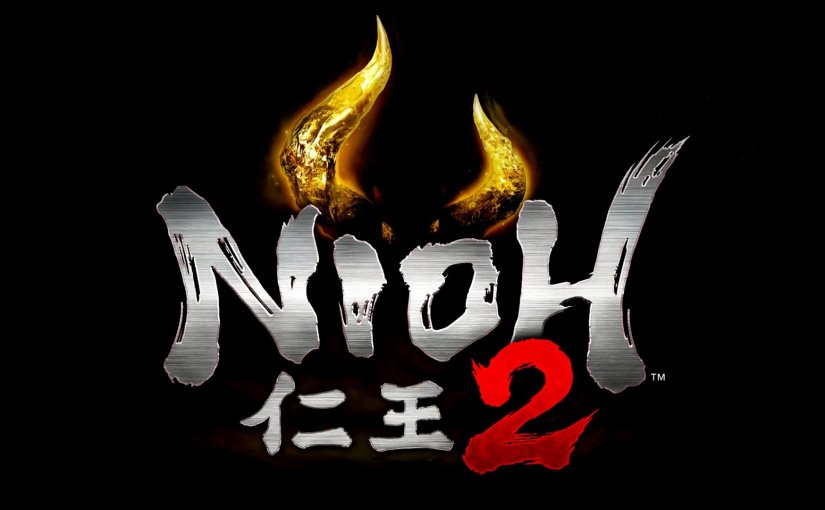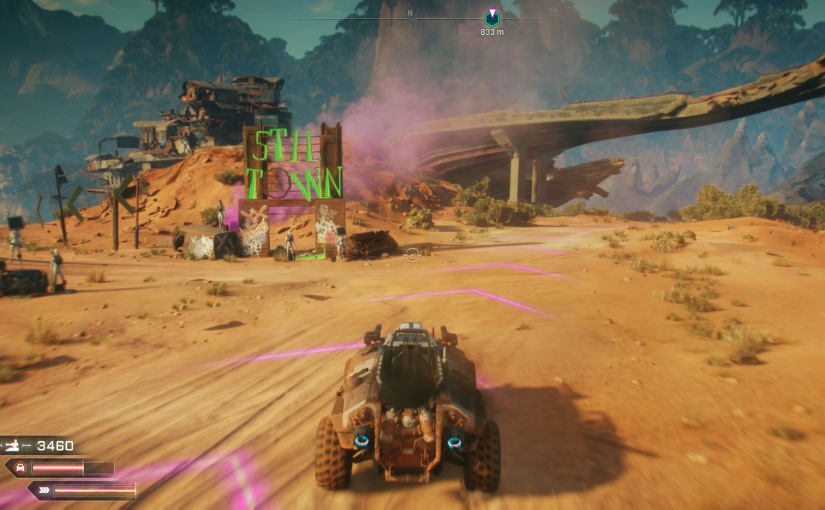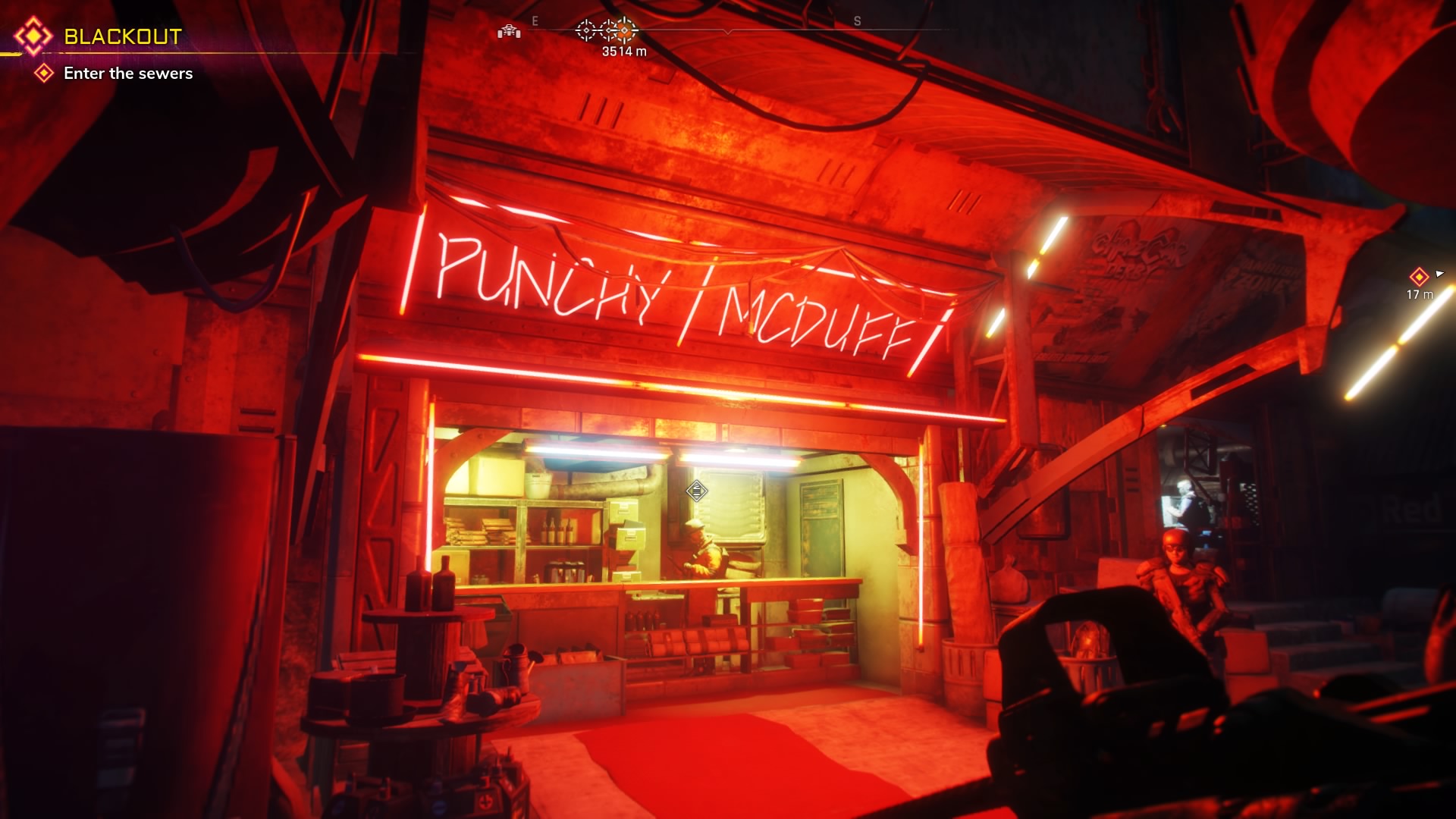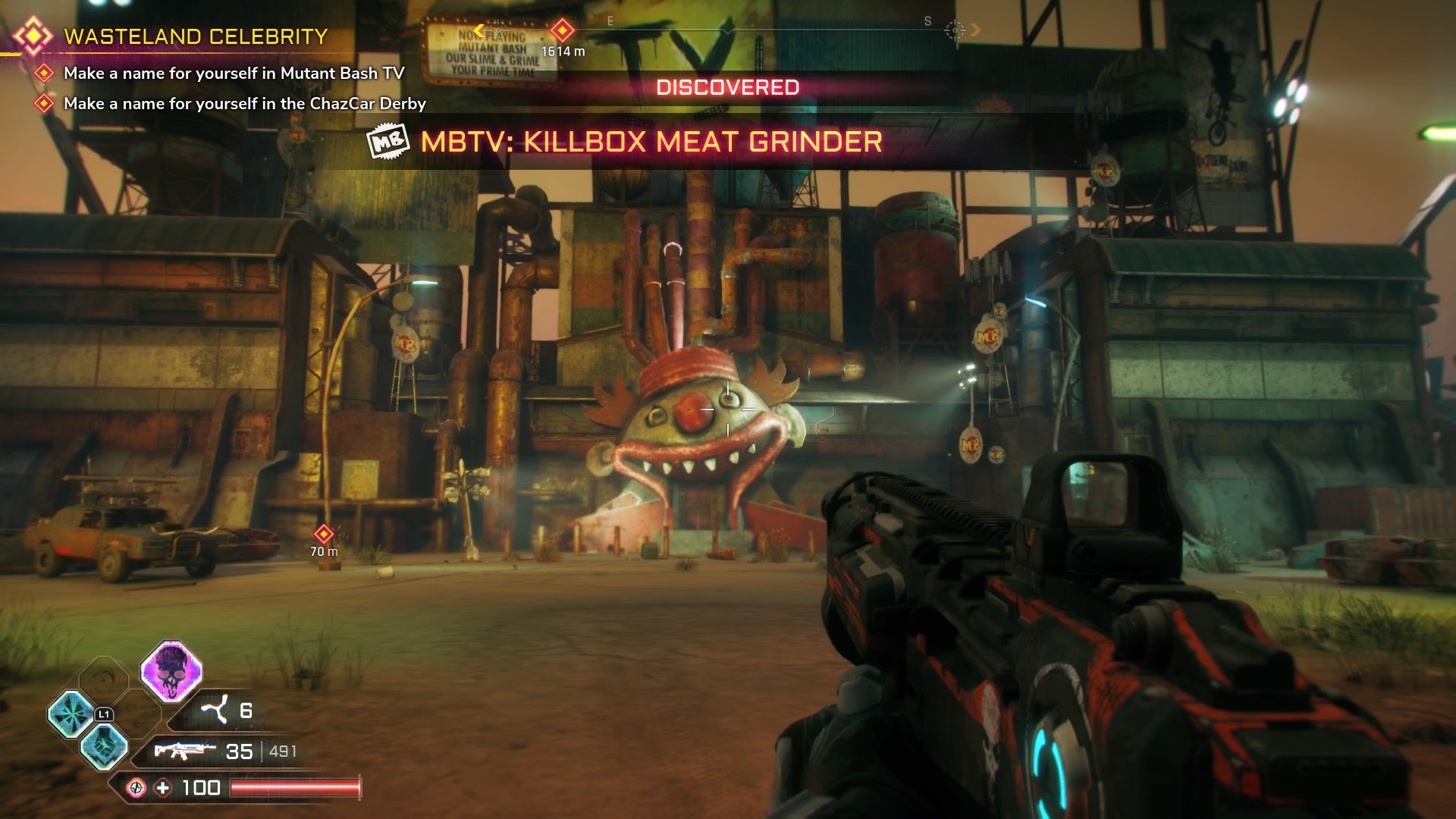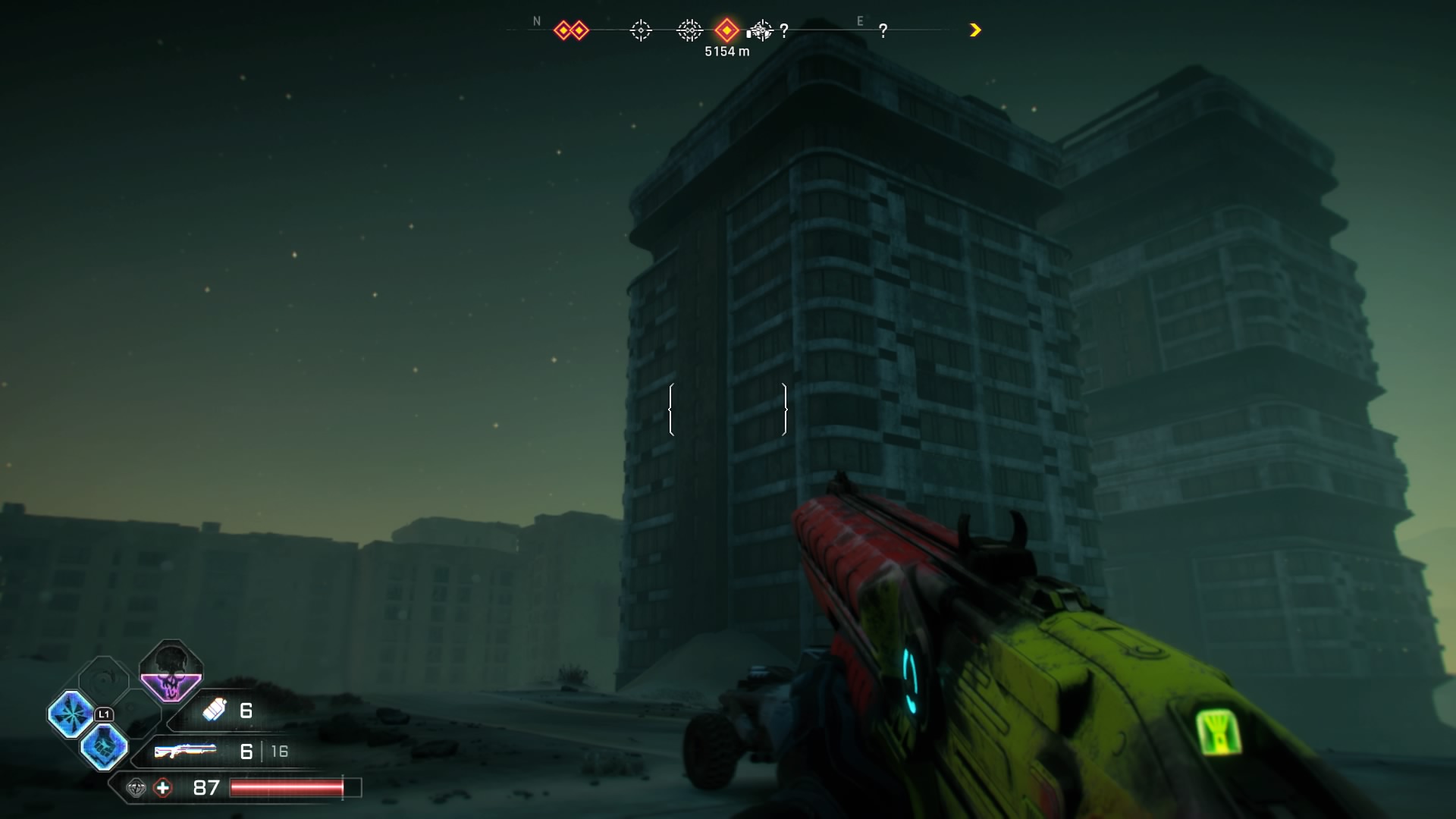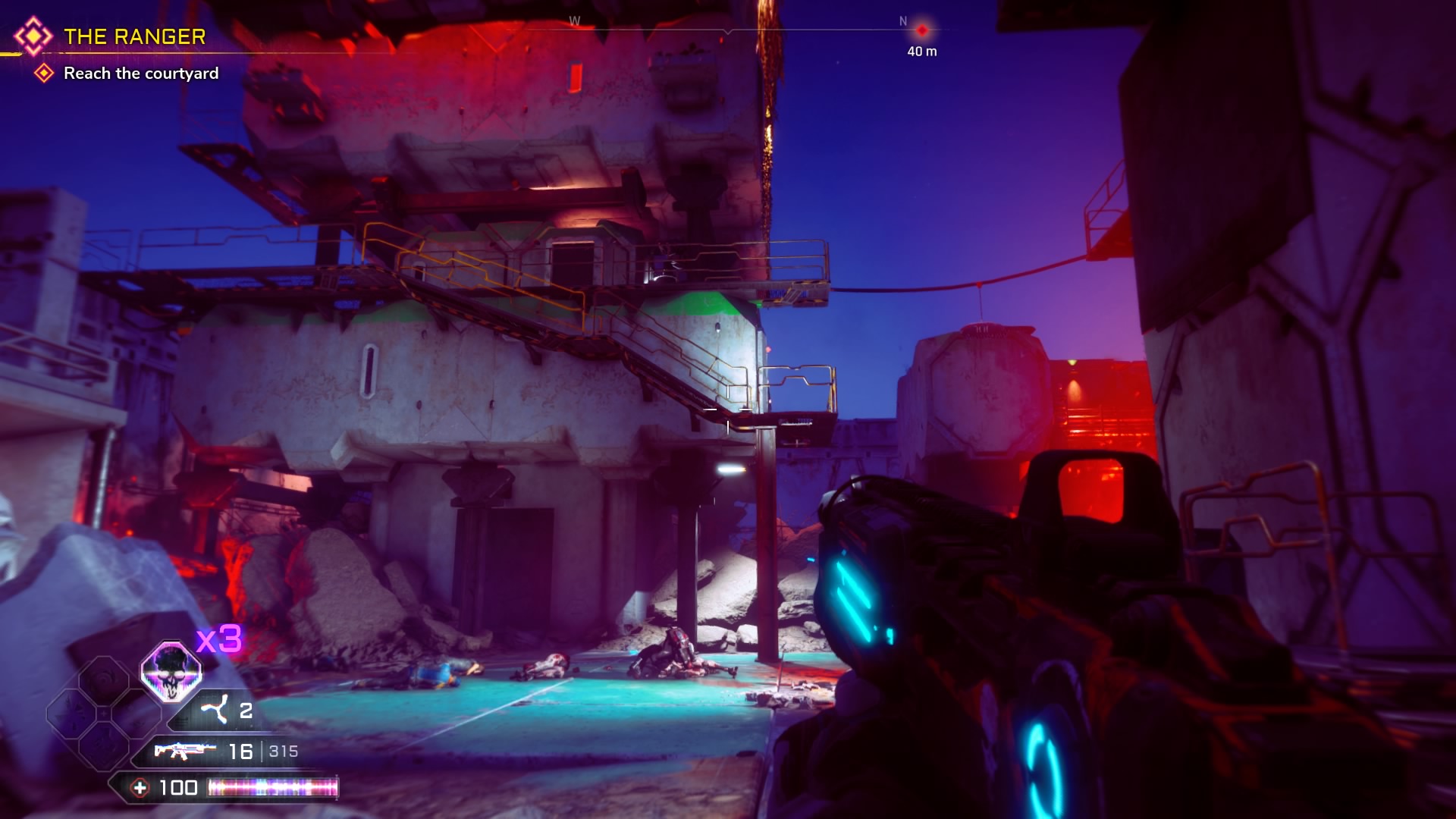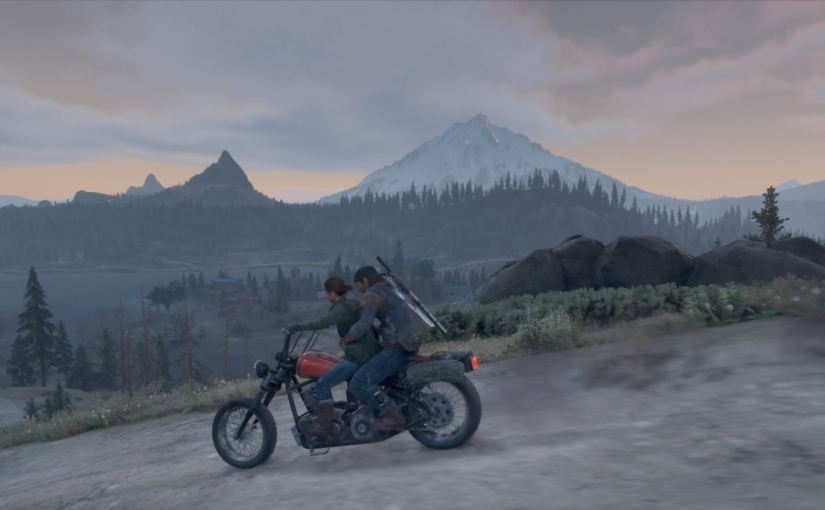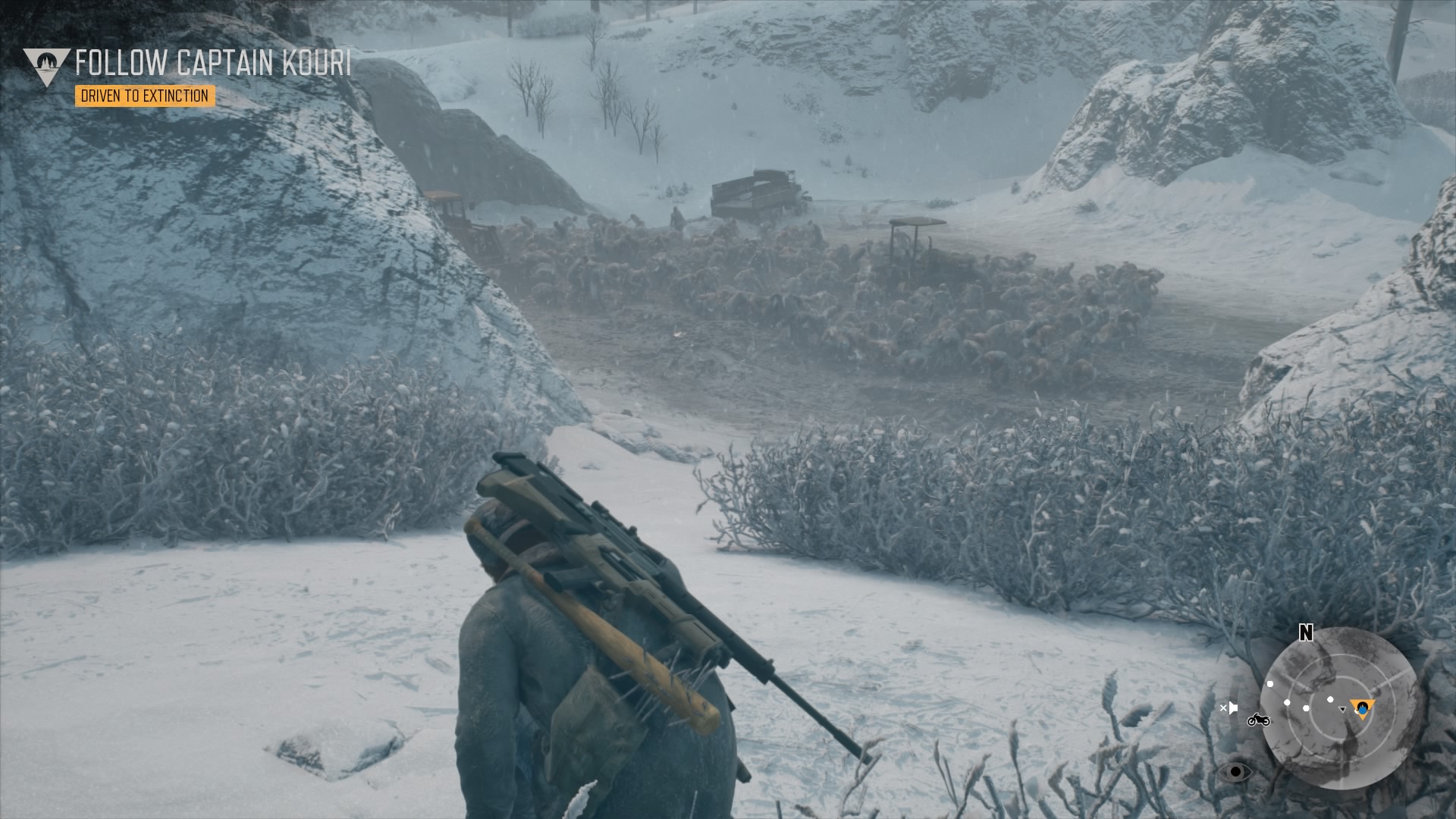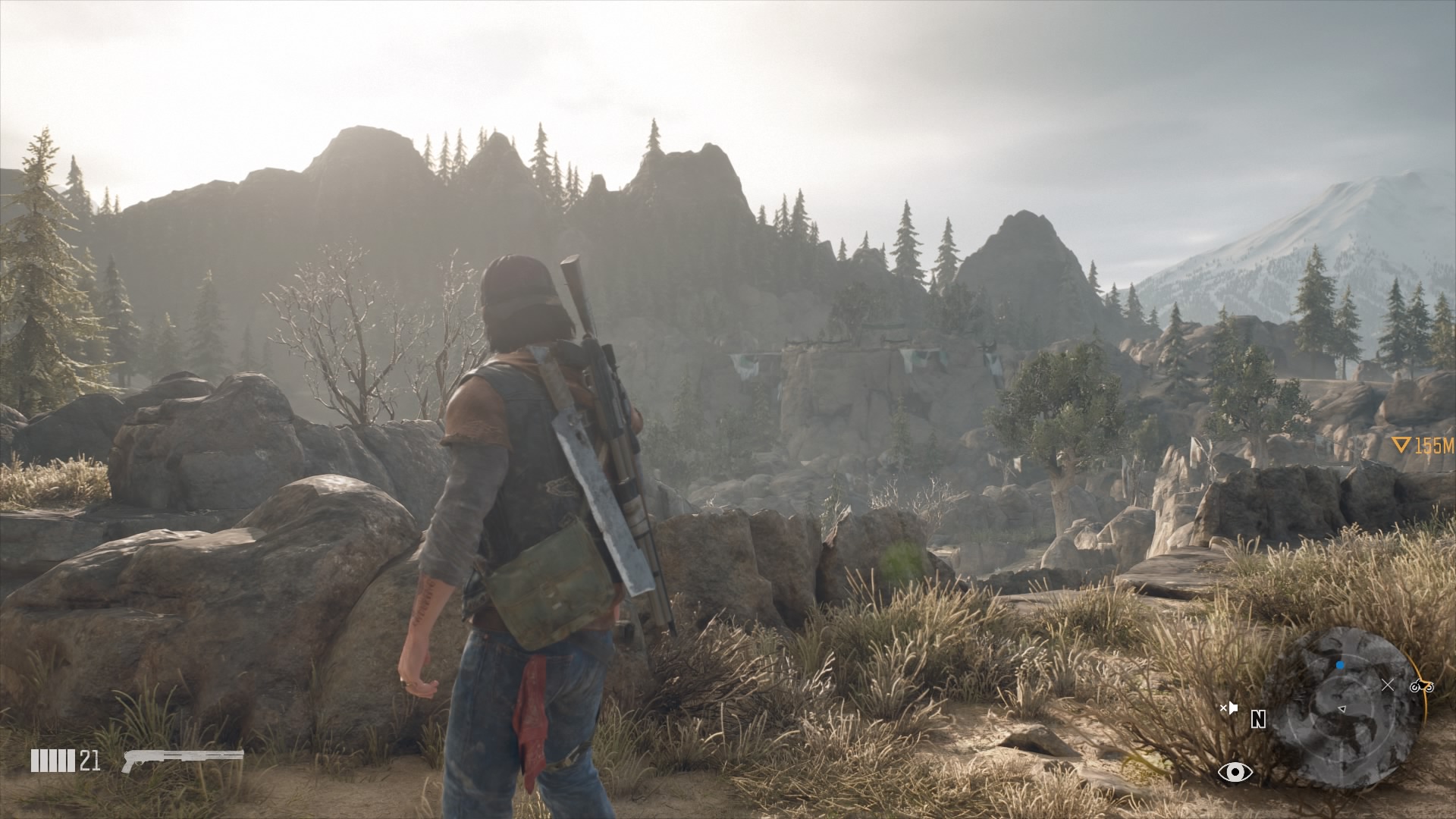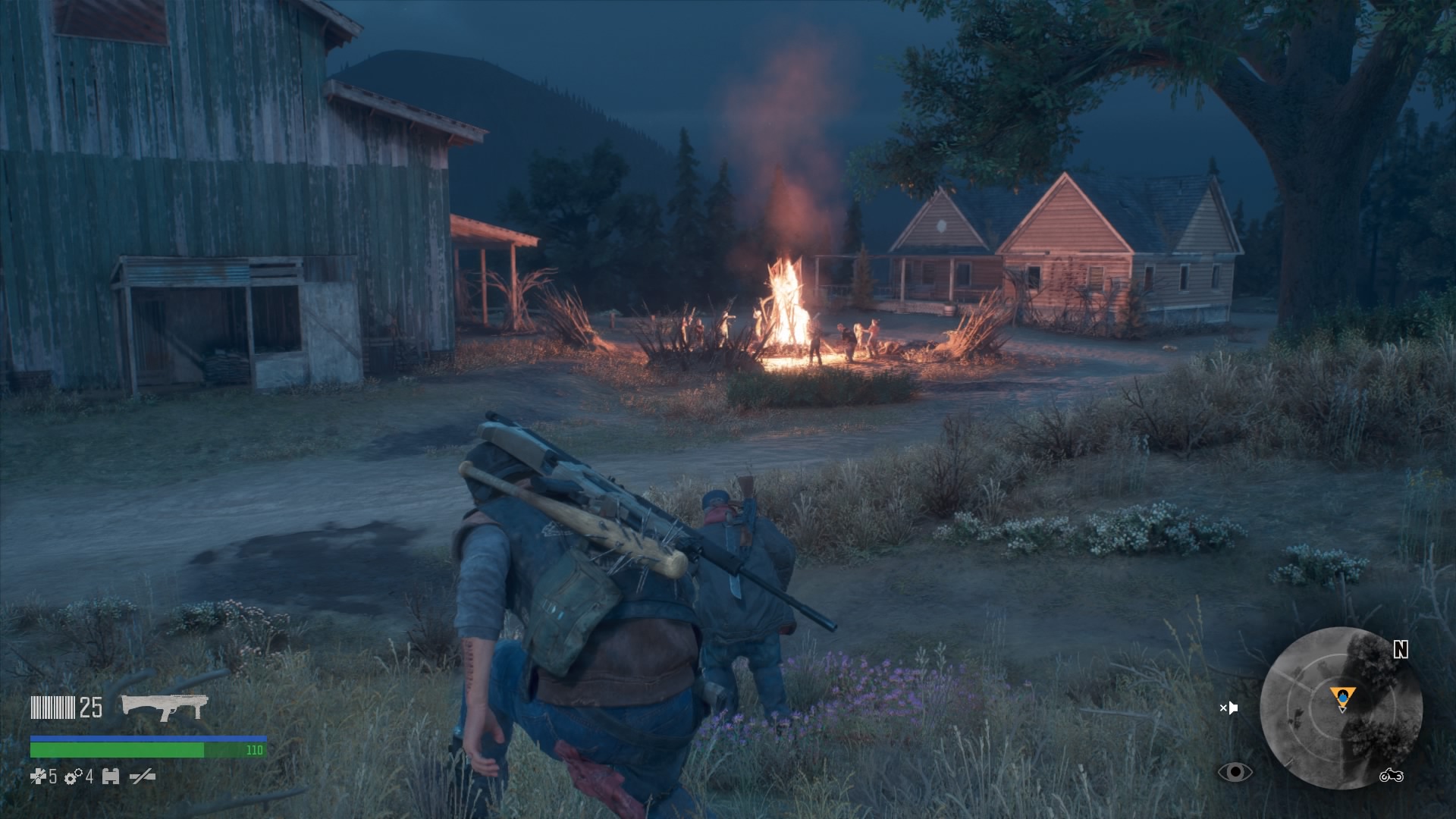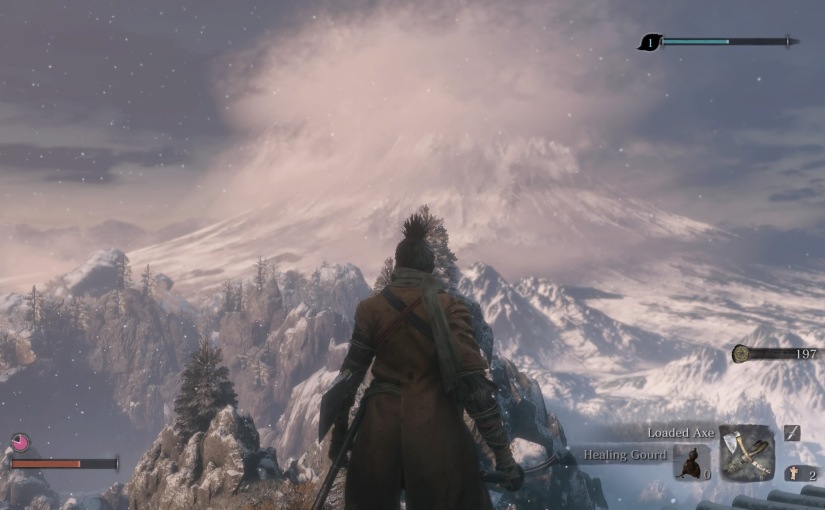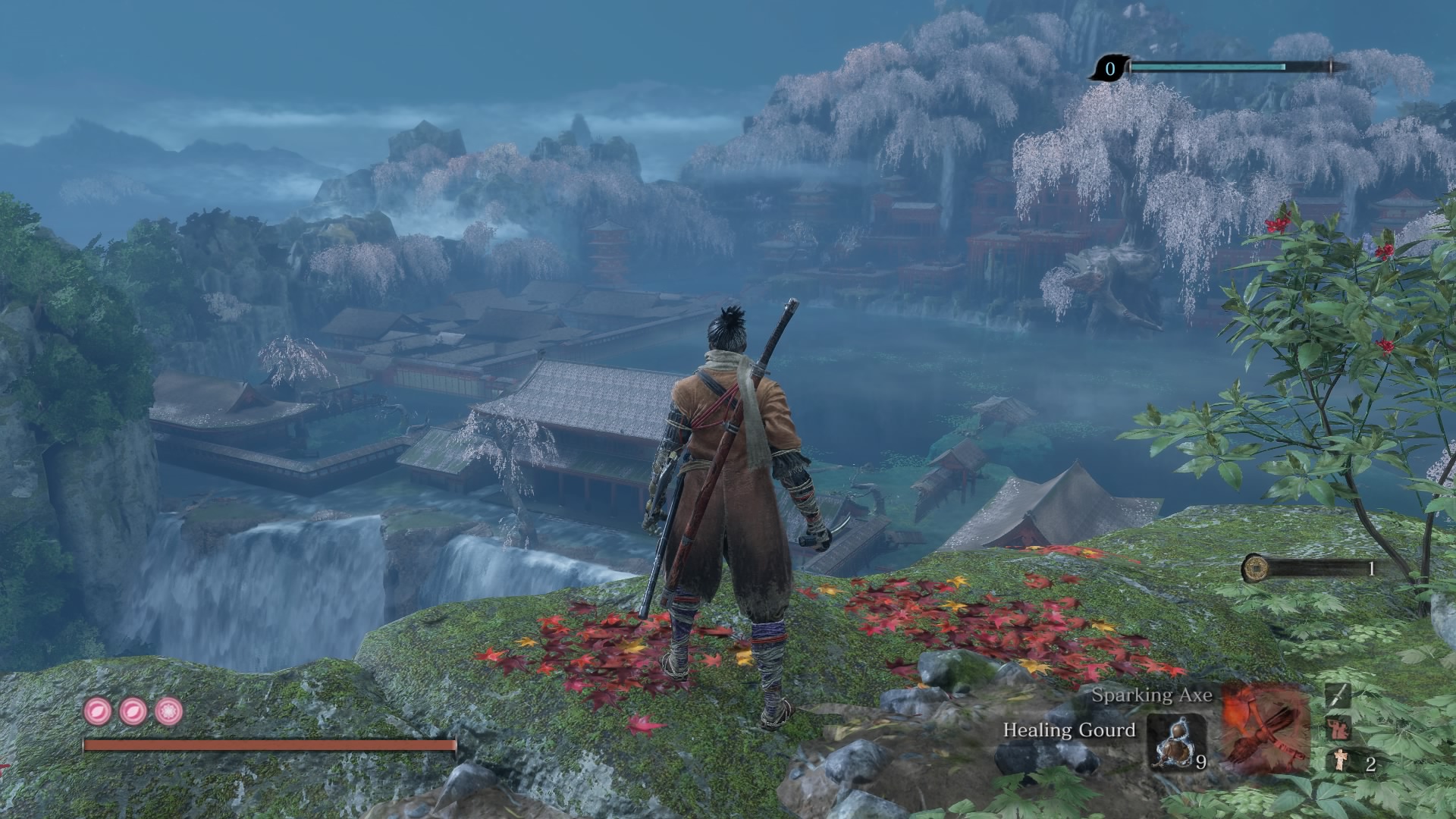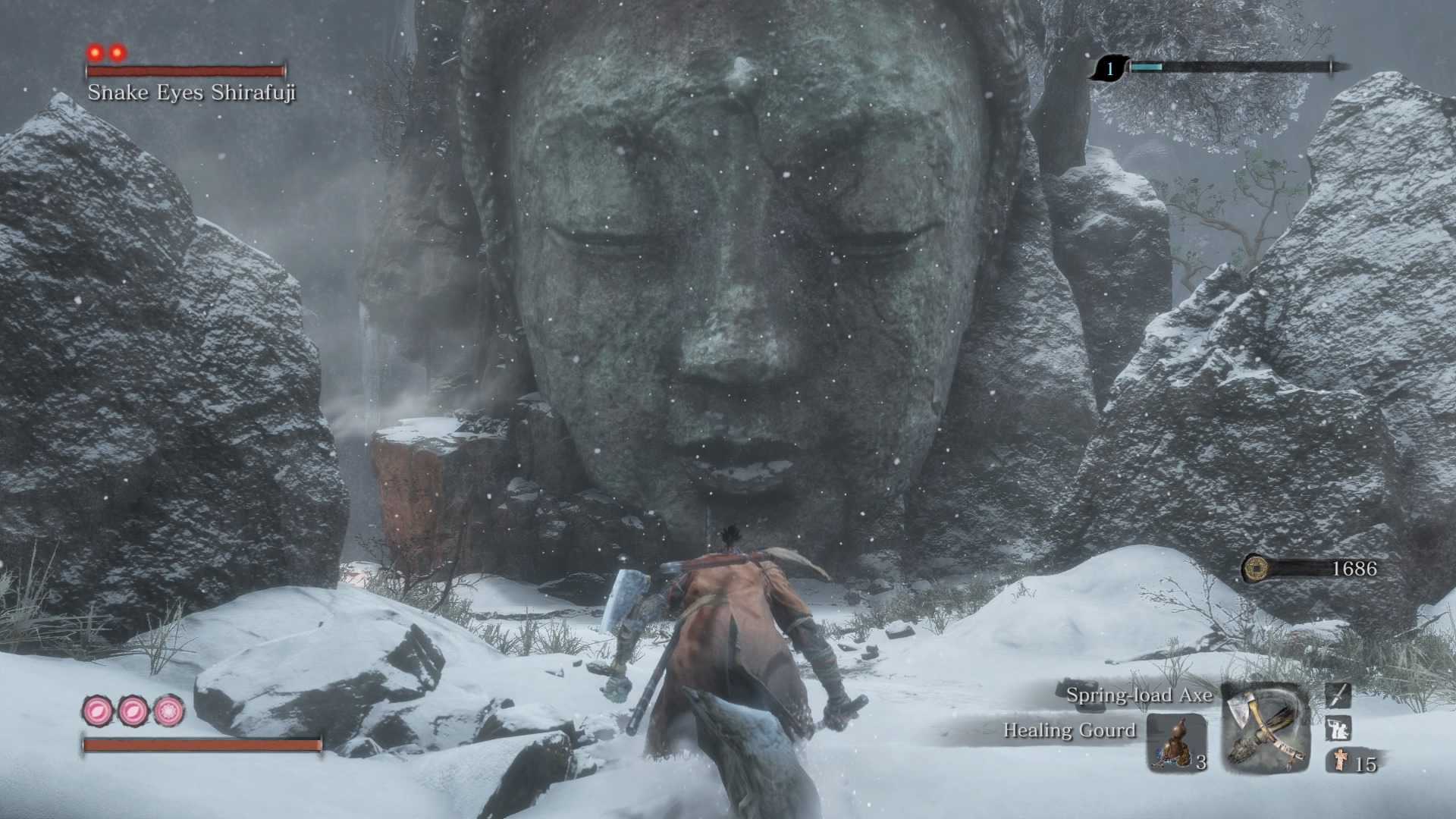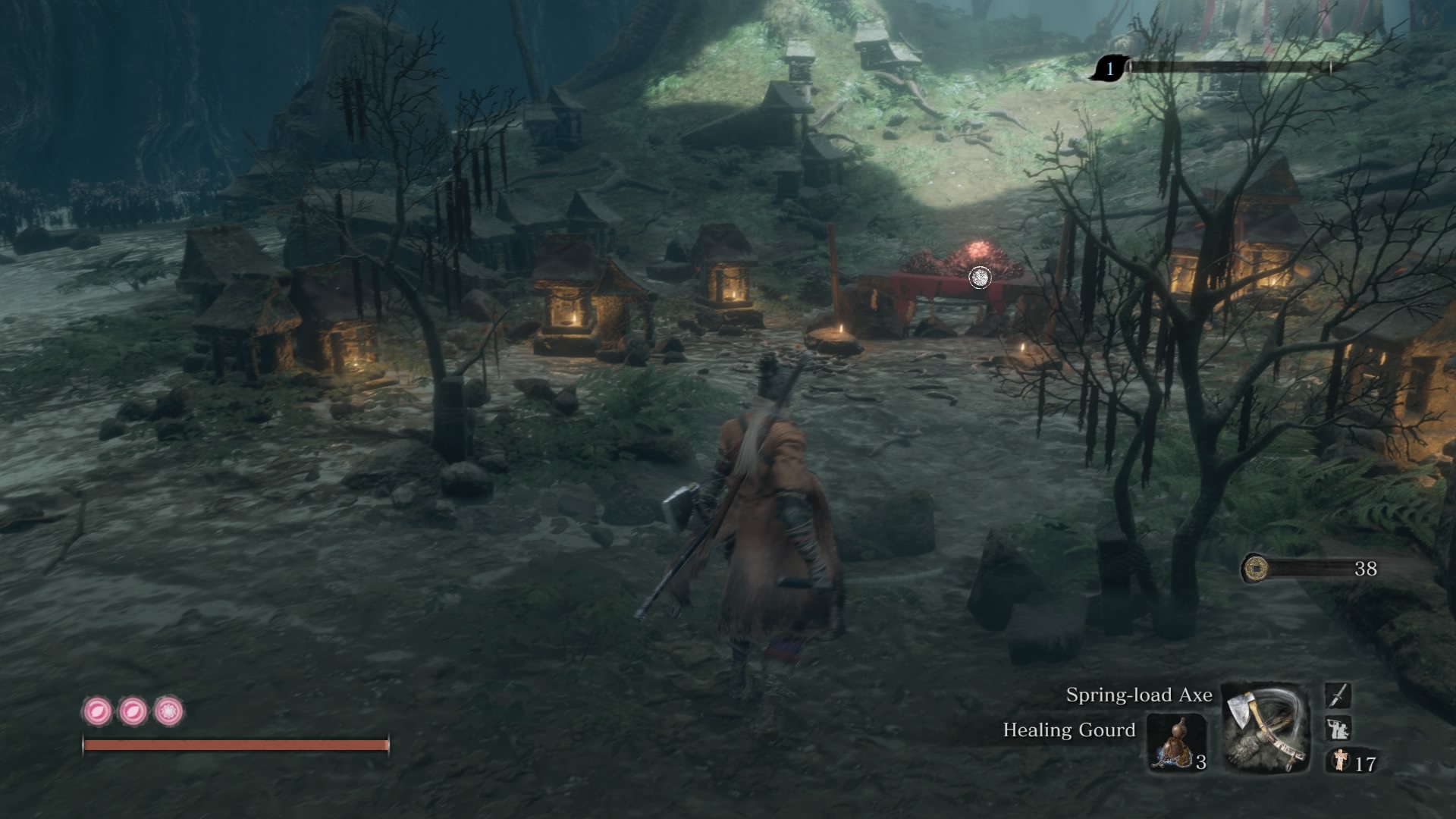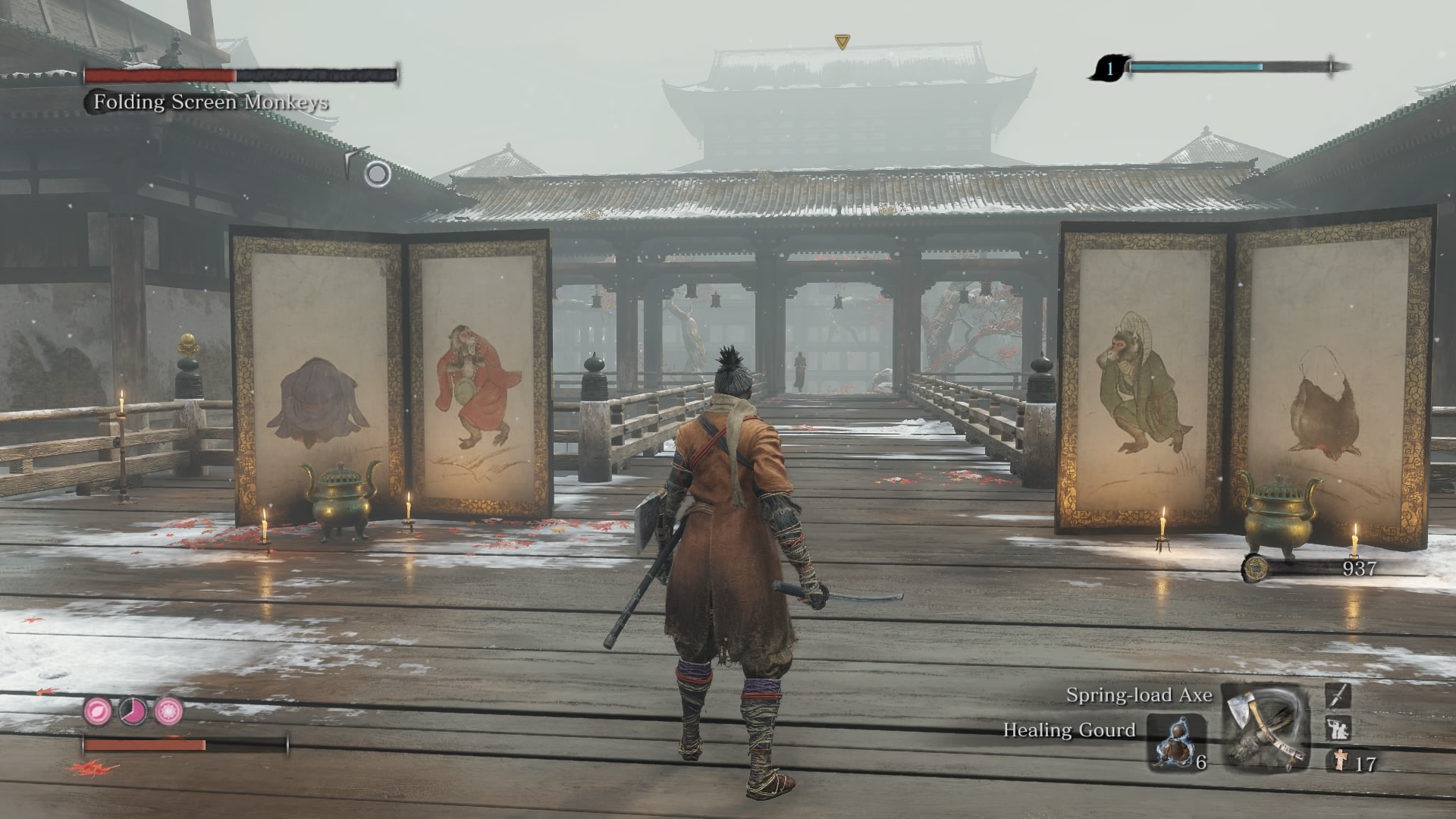There are some series in gaming where you pretty much know what to expect before you even hit start. Neither the story nor the gameplay will present any surprises, with everything playing out pretty much how you’d expect, and yet, they’re immensely fun regardless. Ratchet and Clank is one of those games, and Rift Apart is another fantastic addition to the franchise.
It makes a glorious first impression right out of the gate, as we see our two heroes being celebrated as galactic heroes in a futuristic parade. It’s our first opportunity to marvel at the game’s graphics, which make full use of the PS5’s technical prowess. The newest version of Metropolis bursts with colour and life, instilling Pixar-like wonder as you bounce around the different floats within the parade.
The other planets you’ll visit throughout the game are similarly spectacular. Whether that’s the incredibly purple Blizar Prime or the sandy Torren IV, each new area looks fantastic and a joy to explore. They don’t merely pop with colour either. They’re amazingly detailed, particularly Nefarious City, a futuristic locale that’s teeming with life on a level I’ve not seen in a console game before.

However, this is an action-packed series. So, you don’t get to admire the scenery for too long before Ratchet and Clank’s long-time nemesis, Dr Nefarious, gatecrashes the procession in a bid to steal the Dimensionator; a powerful device that can open portals to other universes. After a lengthy scuffle, it explodes, damaging all of time and space before trapping our heroes and their old foe in an alternate dimension. The titular duo becomes separated before learning that, in this universe, Dr Nefarious is an Emperor and infinitely more competent than the one they’ve repeatedly defeated for years. A big concern for certain, given that the fate of multiple universes is at stake.
But an alternate Nefarious means this universe has counterparts for all the characters we’ve come to know. Whether that’s Captain Qwark, Pierre the pirate or Skid Mcmarx, meeting them becomes something to look forward to, if only to find out how different they are in this universe. Chief among these alternate versions is Rivet, this universe’s last remaining Lombax, who we get to play as after she teams up with Clank in the early knockings.
If you find yourself concerned about playing a different character from Ratchet, fear not. Insomniac has a knack for creating lovable characters, and Rivet is no exception. She’s kind-hearted, fearless and faces danger with unrelenting joy. The notion of riding an explosive swamp creature terrifies both Ratchet and Clank, but Rivet takes it in her stride and even gets excited about the idea. She even has her own tragic origin story that involves Kit – Clank’s counterpart – that shows the strength of character she possesses compared to most.

The narrative as a whole is good fun. Despite the seemingly large stakes, it clips along at a pleasant pace with no real sense of urgency. That might sound negative, but the Ratchet and Clank games are such lovely places to be. An overly dramatic story isn’t really required. It briefly touches on themes like loneliness and forgiveness but doesn’t lean on them too heavily. It is a game for children, after all. The aim is to have a blast with a smile on your face.
And that is something that the stellar gameplay of Rift Apart is more than happy to provide. If you’ve played any of the previous games in the series, you’ll be more than familiar with the whacky arsenal of weapons you’ll accrue throughout your adventure. There are some fairly standard gun types that you’ll be well-acquainted with, such as chunky shotguns and deadly accurate rifles, but there are others that are wondrously bizarre.
There’s the Topiary Sprinkler, a deployable turret of sorts that will promptly turn any enemy into a well-trimmed hedge version of themself. Ultimately, it’s an overly elaborate stun, but it’s that needlessness that makes it fantastic. Beyond that, you’ve got the Ricochet, which fires a projectile that you can make hit the same enemy over and over by continuing to tap the trigger like repeated slaps to the face in an episode of Looney Tunes.

If I had any criticism about the game’s array of weapons, it’s that there might be one too many. There are a couple that fall a little flat compared to the others. For instance, the Cold Snap – a gun that turns enemies into an ice cube – feels like a less effective form of the Topiary Sprinkler. Meanwhile, the Void Repulser, which provides a shield you can also fire, is a less than impressive shotgun. Still, there’s so much glorious chaos on screen. A few dud weapons hardly spoil the fun.
However, if battling endless waves of enemies was the entire game, it might have become a little stale after a few hours. If you know the series, though, you’ll know that Insomniac always inject a good deal of variety into these games. Outside of battle, you’ll traverse the numerous planets using high-speed hover boots, take a rollercoaster trip around parts of levels using grind rails and engage in a spot of light platforming between killing a colourful cast of alien enemies. It makes exploring each planet a treat, and a series of fantastic set pieces link it all together to make it more exhilarating.
Thanks to the universe’s impending collapse, rifts in time and space have a habit of opening up throughout the game. At their best, these create some fantastic segments where Ratchet or Rivet fall through multiple worlds at a time whilst some gargantuan monster pursues you. It truly feels like you’re on some obnoxious ride at a theme park that decided health and safety regulations were entirely optional. It falters as a mechanic in regular gameplay, though. It acts more like an alternate version of a grapple point, which is slightly disappointing. I was hoping it would have more interesting effects on gameplay than simply moving me a bit further away.

But that’s merely Lombax-centric gameplay variety. Insomniac also decided we’d need a break from that occasionally, so they included a few other gameplay types to keep things interesting. One of those sees you playing as Clank in puzzle-based sections where the aim is to guide multiple spectral versions of our favourite little robot to a gate at the other side of the room. To do this, you can grab various orbs that can alter the pathway to the exit. As with most Clank sections historically, it’s not fantastic, but the puzzles are never overly difficult, and it provides a bit of much-needed calm.
Another of the side gameplay types is much more successful. It sees you controlling Glitch, a little robot designed to eliminate viruses in computer systems. In-game, this translates to gunning downing an abundance of enemies with rapid-firing machine guns. It’s great fun, partly because the shooting provides so much haptic feedback, you feel like the most powerful being on Earth. It also has a cute narrative, as Glitch slowly grows in confidence throughout the game, eventually believing in its ability as a vanquisher of viruses.
Ultimately, if you’ve enjoyed a Ratchet and Clank before, then you’re likely going to love Rift Apart. It looks absolutely stunning. Its predecessor remains one of the best-looking PS4 games, and I can see that being the case with Rift Apart on the PS5. Similarly, the gameplay is fantastic, with excellent weapons and set pieces making for an enjoyable ride. Looking for faults just seems like unnecessary nitpicking.
8/10
